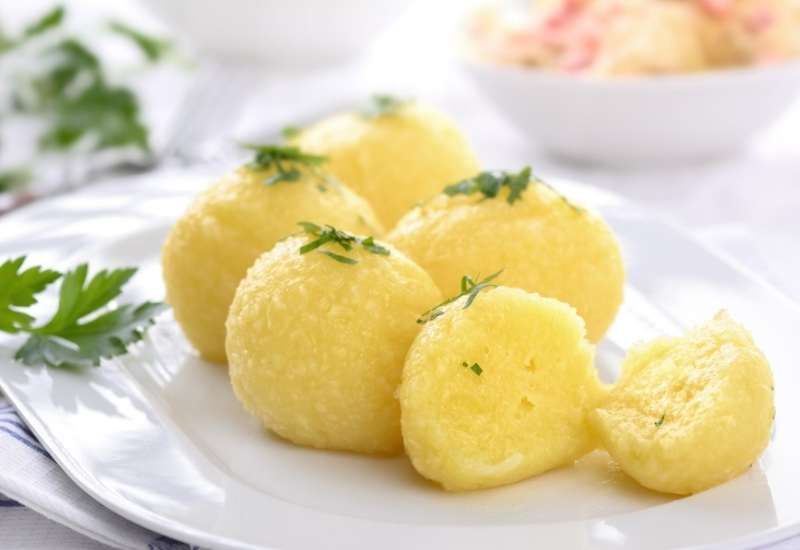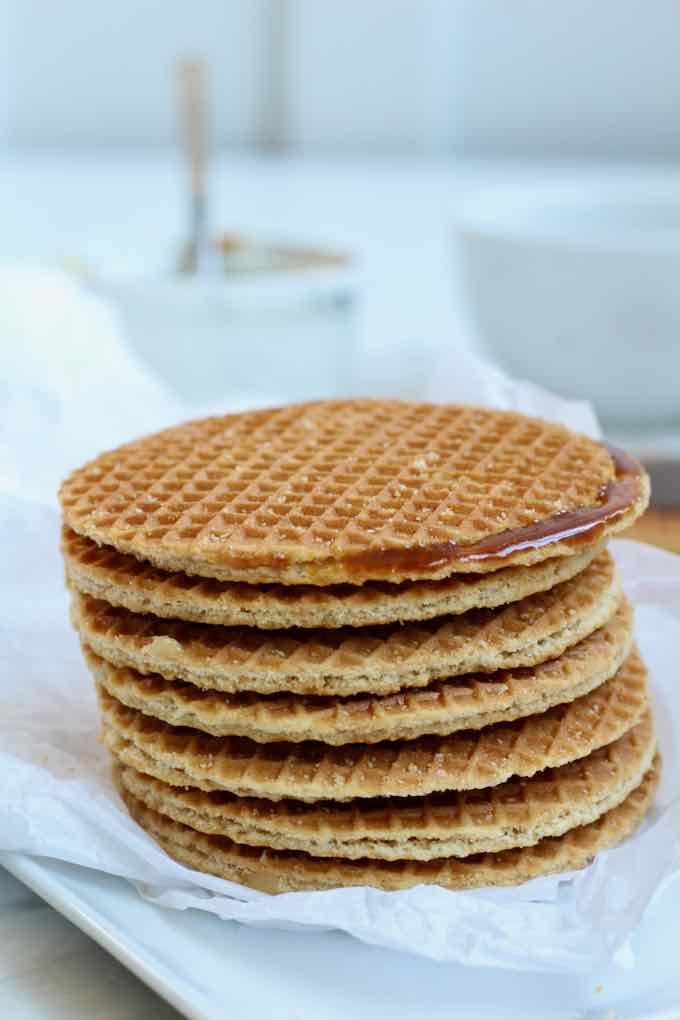Served hot, the stroopwafel is known in Wallonia under the name of lacquemant (lackmans). The syrup used to fill the lacquemant is a syrup flavored with orange blossom. Also, the recipe for this syrup does not include molasses.
WHAT IS THE ORIGIN OF STROOPWAFEL?
The origin of stroopwafels dates back to 1784. At the time, a baker from Gouda (a town also famous for its cheese) tried to make a waffle from leftover baked goods, more specifically crumbs and stale bread.
He pressed the crumbs flat with a waffle iron. According to the story, the first attempt was unsuccessful. The waffles were too dry and crumbled. However, to remedy this problem, the baker stuck two layers of sandwiched waffles with a sticky caramel syrup. The stroopwafel as we know it was born.
Over time, the recipe for stroopwafel has evolved. Today it contains flour, butter, sugar, yeast, eggs, milk and cinnamon. The Dutch pastry became popular in the Netherlands and more particularly with street vendors. They hastened to sell them as snacks.
However, it took more time for stroopwafel to be exported to the other side of the world. It was only when United Airlines introduced them on their morning flights that the stroopwafels entered American territory.
THE TRADITIONAL WAY TO EAT THE DUTCH WAFERS
In the Netherlands, people don’t eat stroopwafels in any fashion. Tasting the stroopwafels is the subject of a very specific ritual.
Indeed, the Dutch place their stroopwafel just above their cup of coffee so that it is perfectly balanced. Thus, the steam of the hot drink (tea or coffee) infiltrates the wafer and slightly softens the underside of the cookie. The wafer sandwich therefore offers several textures when biting into it: melting on one side and crispy on the other.
HOW TO MAKE STROOPWAFEL
To make the best stroopwafels, watch how the wafers cook. In fact, the cooking time varies from one appliance to another. Some prefer them softer and others more crunchy. It is then necessary to adapt the cooking time to taste.
In the stroopwafel recipe presented here, the cookies were baked for 1 minute and 45 seconds, and have a crunchy consistency. Be careful not to overcook the waffles, otherwise they will break as soon as the caramel filling is placed.
The caramel should also be allowed to cool slightly before spreading it over the wafers. If it is still too hot, it will leak on the sides. The original stroopwafel recipe barely shows the syrup between the layers of wafers. Indeed, one should not put too much caramel when filling the cookies because it is very sweet and very sticky.
For the dough
- 2 cups flour , sifted
- ½ cup butter (soft)
- ⅓ cup caster sugar
- 1 egg (at room temperature), beaten
- 1 tablespoon milk (at 97 F / 36°C)
- 1 tablespoon active dry yeast
- ¼ teaspoon salt
For the syrup
- ½ cup molasses (or cane sugar syrup)
- ⅔ cup brown sugar
- ½ cup butter , diced
- ½ teaspoon ground cinnamon
Equipment
- Stand mixer
- Baking sheet
- Pizzelle maker
Dough
-
In the bowl of a stand mixer, beat the butter, sugar, egg, milk and yeast. Finally add the flour and salt and, using the dough hook, knead until obtaining a homogeneous and fairly firm dough.
-
Cover the dough with a cloth and let it rise for 1 hour in a warm place, away from drafts.
-
Place the dough on a floured work surface and knead it lightly.
-
Divide it into 6 to 8 pieces and form balls about 2 inches (5 cm) in diameter.
-
Place the dough balls gradually on a baking sheet with enough space between them.
-
Cover them with a damp cloth and let them rise for 15 minutes in a warm place, away from drafts.
Baking
-
Bake the stroopwafels in a pizzelle maker, with a shallow rack. The stroopwafels must be flat and thin.
-
As soon as the appliance stops releasing steam, open it and check for doneness. They must be nicely golden.
-
Using a sharp knife, cut each stroopwafel in half horizontally while still warm.
Syrup
-
Combine molasses, brown sugar, butter, and ground cinnamon in a saucepan.
-
Heat and stir until well combined.
-
Let cool.






















